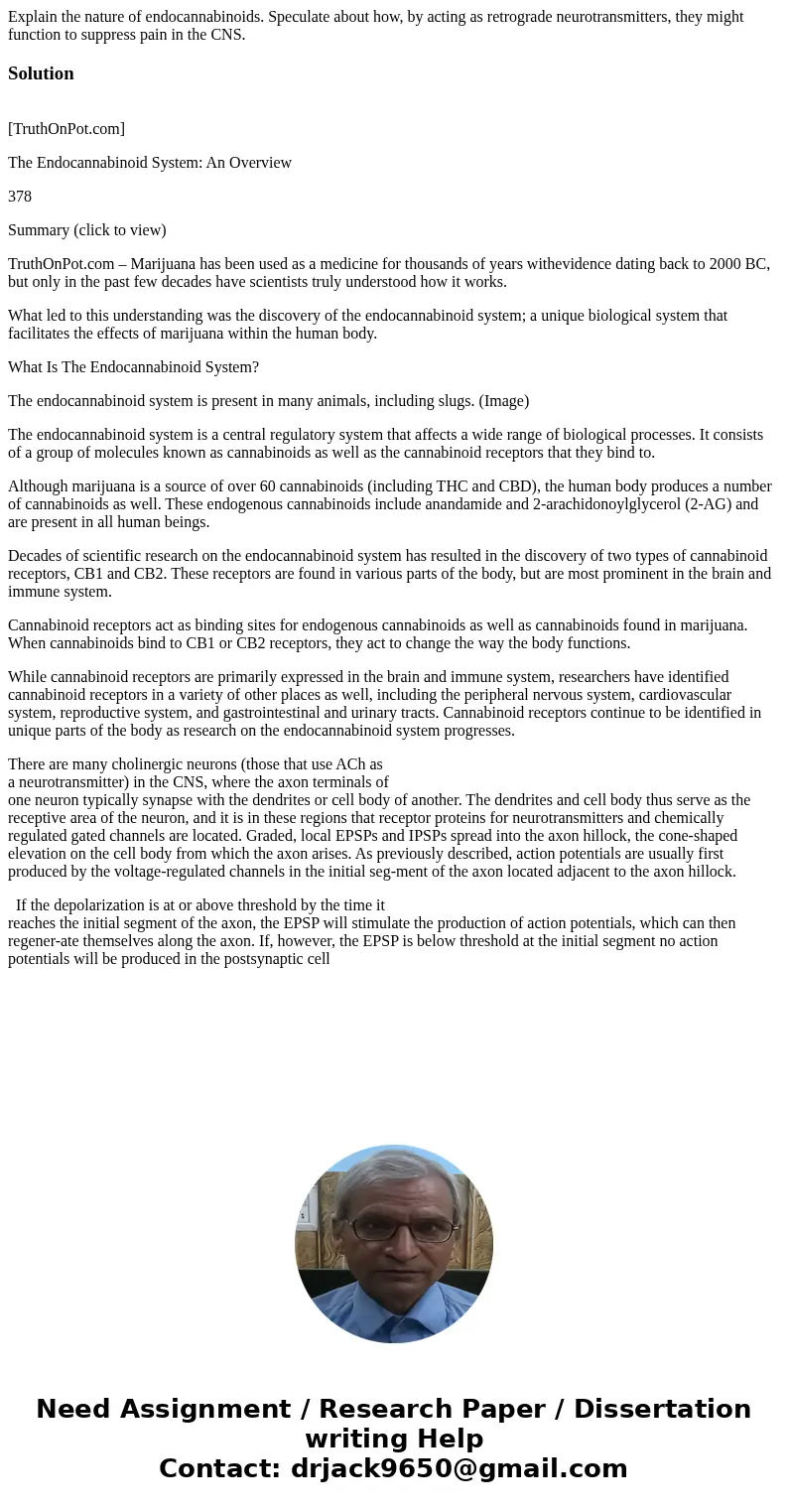Explain the nature of endocannabinoids Speculate about how b
Explain the nature of endocannabinoids. Speculate about how, by acting as retrograde neurotransmitters, they might function to suppress pain in the CNS.
Solution
[TruthOnPot.com]
The Endocannabinoid System: An Overview
378
Summary (click to view)
TruthOnPot.com – Marijuana has been used as a medicine for thousands of years withevidence dating back to 2000 BC, but only in the past few decades have scientists truly understood how it works.
What led to this understanding was the discovery of the endocannabinoid system; a unique biological system that facilitates the effects of marijuana within the human body.
What Is The Endocannabinoid System?
The endocannabinoid system is present in many animals, including slugs. (Image)
The endocannabinoid system is a central regulatory system that affects a wide range of biological processes. It consists of a group of molecules known as cannabinoids as well as the cannabinoid receptors that they bind to.
Although marijuana is a source of over 60 cannabinoids (including THC and CBD), the human body produces a number of cannabinoids as well. These endogenous cannabinoids include anandamide and 2-arachidonoylglycerol (2-AG) and are present in all human beings.
Decades of scientific research on the endocannabinoid system has resulted in the discovery of two types of cannabinoid receptors, CB1 and CB2. These receptors are found in various parts of the body, but are most prominent in the brain and immune system.
Cannabinoid receptors act as binding sites for endogenous cannabinoids as well as cannabinoids found in marijuana. When cannabinoids bind to CB1 or CB2 receptors, they act to change the way the body functions.
While cannabinoid receptors are primarily expressed in the brain and immune system, researchers have identified cannabinoid receptors in a variety of other places as well, including the peripheral nervous system, cardiovascular system, reproductive system, and gastrointestinal and urinary tracts. Cannabinoid receptors continue to be identified in unique parts of the body as research on the endocannabinoid system progresses.
There are many cholinergic neurons (those that use ACh as
a neurotransmitter) in the CNS, where the axon terminals of
one neuron typically synapse with the dendrites or cell body of another. The dendrites and cell body thus serve as the receptive area of the neuron, and it is in these regions that receptor proteins for neurotransmitters and chemically regulated gated channels are located. Graded, local EPSPs and IPSPs spread into the axon hillock, the cone-shaped elevation on the cell body from which the axon arises. As previously described, action potentials are usually first produced by the voltage-regulated channels in the initial seg-ment of the axon located adjacent to the axon hillock.
If the depolarization is at or above threshold by the time it
reaches the initial segment of the axon, the EPSP will stimulate the production of action potentials, which can then regener-ate themselves along the axon. If, however, the EPSP is below threshold at the initial segment no action potentials will be produced in the postsynaptic cell

 Homework Sourse
Homework Sourse